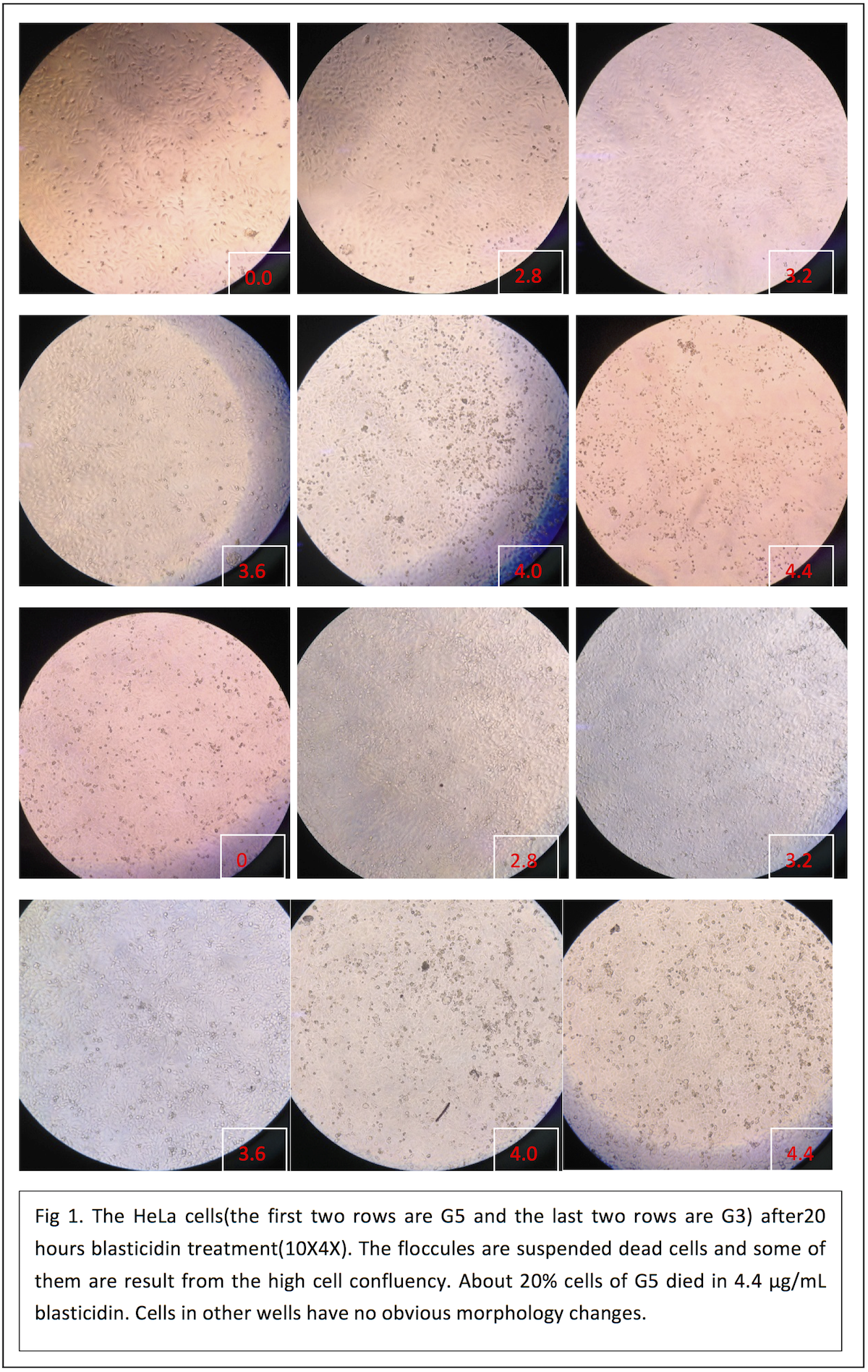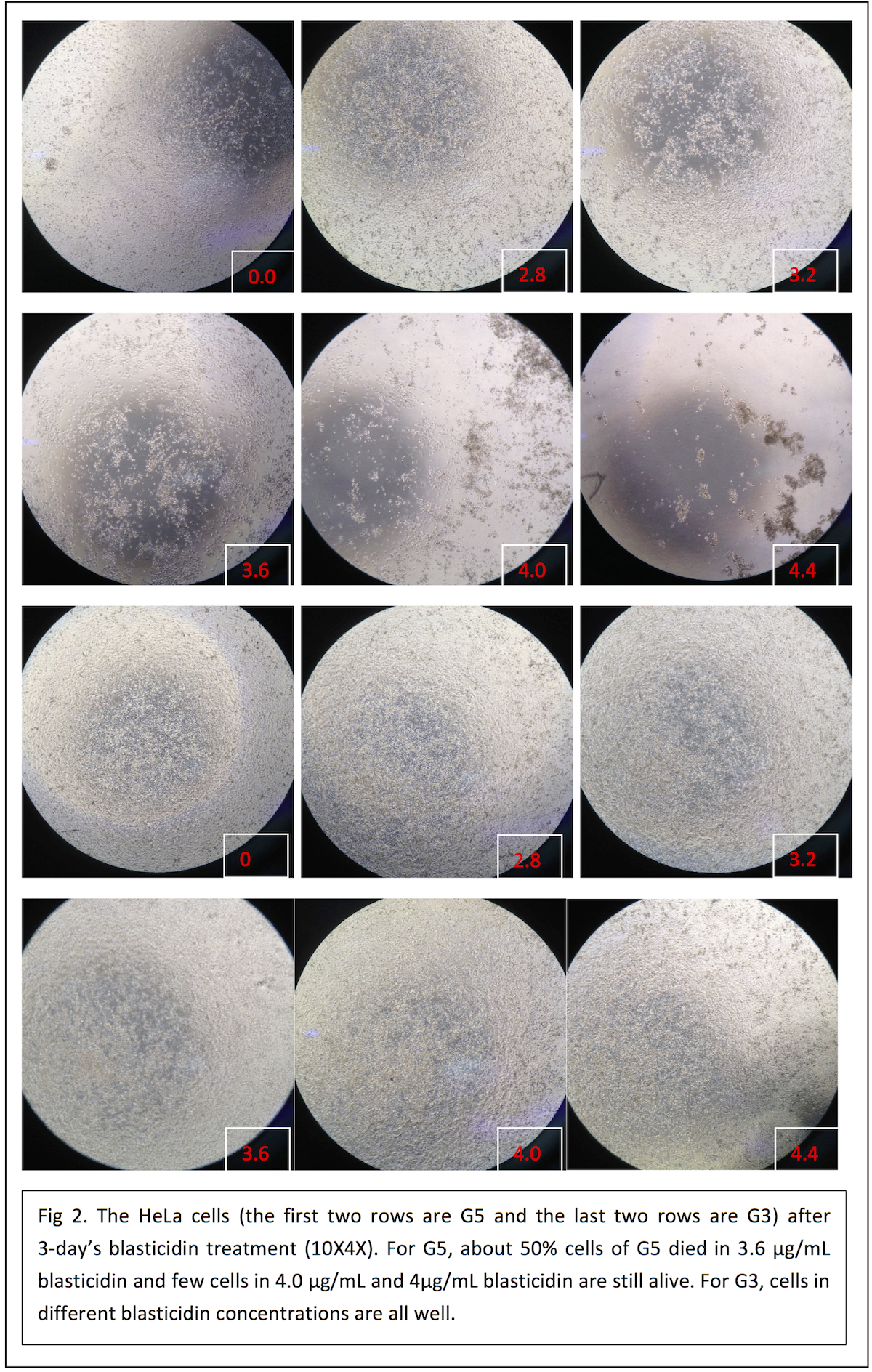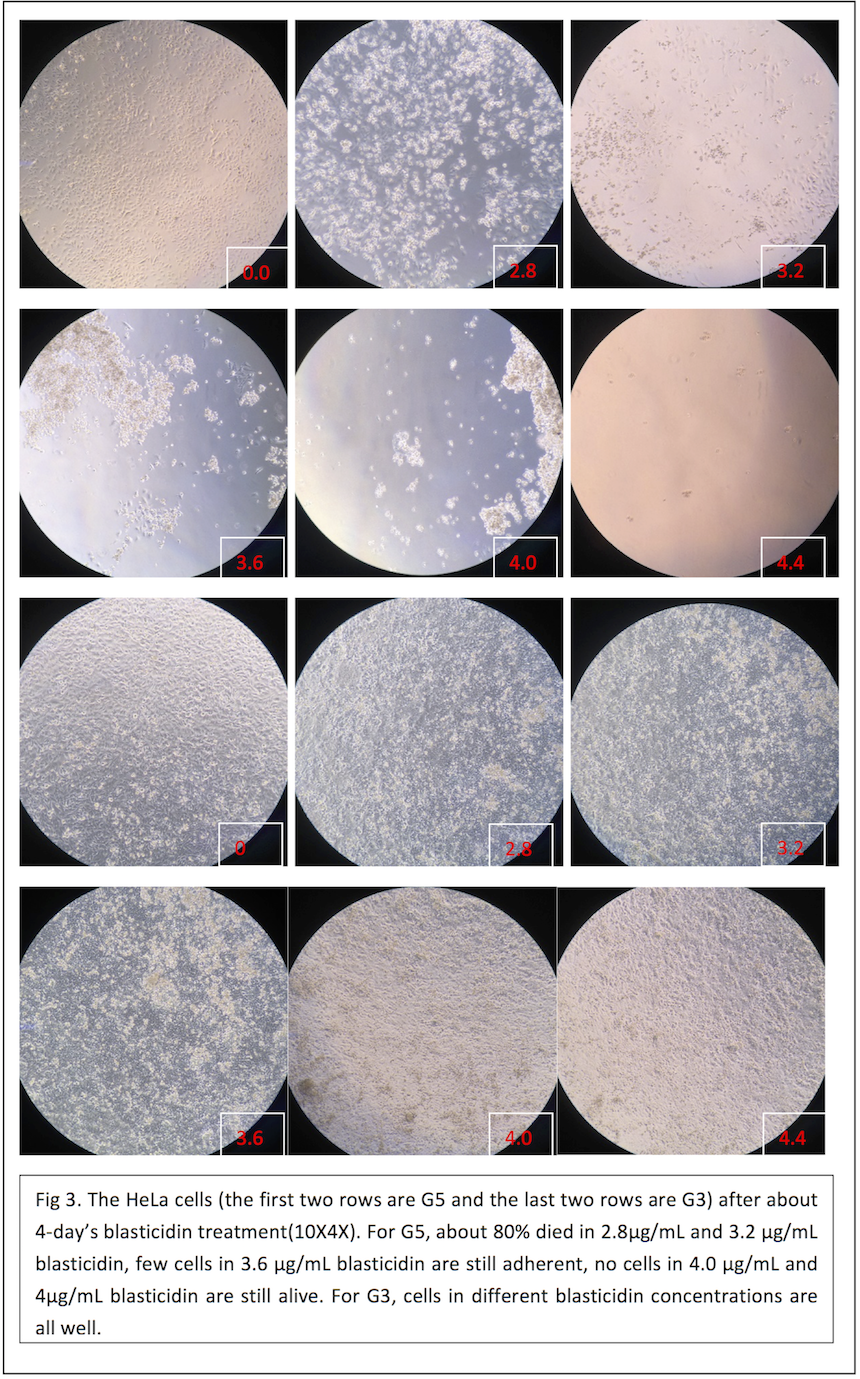Team:SUSTC-Shenzhen/Notebook/HeLaCell/Determining-the-higher-concentration-of-balsticidin-for-cell-selection
From 2014.igem.org
Notebook
Elements of the endeavor.
Contents |
Determining a increased concentration of blasticidin for faster cell selection
2014/9/27 Prepare for selectionIntroduction
Now a set of new plasmid carrying the targeted HIVI or HBV sequences has been constructed from the previous plasmid pBX-083 by adding the targeted sequence before or after the EGFP gene. It supposed that the EGFP gene may has a frame shift mutation or be cut off the genome if the target sequences are cut off by Cas9 protein with the guide of gRNA. This time, those new plasmids with targeted virus sequence and blasticidin resistance needed to be stably transfected into cells with cas9 gene (G5). This imitates the situation that the transformed hematopoietic stem cells carrying Cas9 gene confront the attack of retrovirus. 2.8 μg/mL blasticidin has been used to select cells that have been stably transfected with EGFP gene and blasticidin resistance. At this concentration, about 1 week time is needed to clear normal HeLa cells, but it is reasonable that those cells which are transfected with blasticidin resistance may be much higher tolerance to blasticidin. So to accelerate the process of the cell screening and save more time, a higher antibiotics concentration is a possible solution. Now HeLa cells with both blasticicin and puromycin resistance (G3, stably transfected with EGFP gene and Cas9 gene) has been obtained, and so has the cells with puromycin resistance (G5, stably transfected with Cas9 gene). So the two kind of cells can be used to carry out another Bla testing to find a concentration which kills G5 in relatively short time (maybe in about 2 or 3 days), but does not affects G3.
Materials
- Dulbecco’s modified Eagle’s medium (DMEM) supplemented with 10% fetal bovine serum (FBS), 1x Penicillin-Streptomycin
- HeLa cells.
- Blasticidin(bla) (10mg/ml).
- Puromycin(puro) (10mg/ml).
- 24 well plate.
Procedures
Sept.27 11:00 Seed plate
Seed G5(Cas and puro resistence) and G3(GFP and bla resistence) cells on one 24-well plate, 30,000 cells per well, and 2 rows(12 wells) for each of the two kinds of cells. G5 are cultured with complete medium with 2.0μg/mL puromycin and G3 are cultured with complete medium with 2.0μg/mL puromycin and 2.8μg/mL blasticidin.
Oct.02 16:00 Change medium
Discard old medium and add new medium different blasticidin concentration to the cells according to the table 1 below.
| G5 | 0ng/μL | 2.8 ng/μL | 3.2 ng/μL | 3.6 ng/μL | 4.0 ng/μL | 4.4 ng/μL |
|---|---|---|---|---|---|---|
| G5 | 0 ng/μL | 2.8 ng/μL | 3.2 ng/μL | 3.6 ng/μL | 4.0 ng/μL | 4.4 ng/μL |
| G3 | 0 ng/μL | 2.8 ng/μL | 3.2 ng/μL | 3.6 ng/μL | 4.0 ng/μL | 4.4 ng/μL |
| G3 | 0 ng/μL | 2.8 ng/μL | 3.2 ng/μL | 3.6 ng/μL | 4.0 ng/μL | 4.4 ng/μL |
Table 1. The blasticidin gradient
Results
Oct.03,12:30

Oct.04
Most cells in 4.4 μg/mL blasticidin died.
Oct.05,16:00

Oct.06,13:00

Discussion and Conclusion
The HeLa cells G3 transfected with blasticidin resistance can tolerate blasticidin concentration up to 4.4μg/mL at which cells without the resistance will die within 2 days. It seems that relatively high blaticidin concentration will not affect the growth of the cells with blasticidin resistance. The blasticidin resistance gene in G3 are under the control of EF1a (Human elongation factor-1 alpha which is a constitutive promoter of human origin. The expression of the resistance driven by EF1a is supposed to be relatively high and has low rate of silence, which may contribute to such a fine Bla tolerance.
 "
"